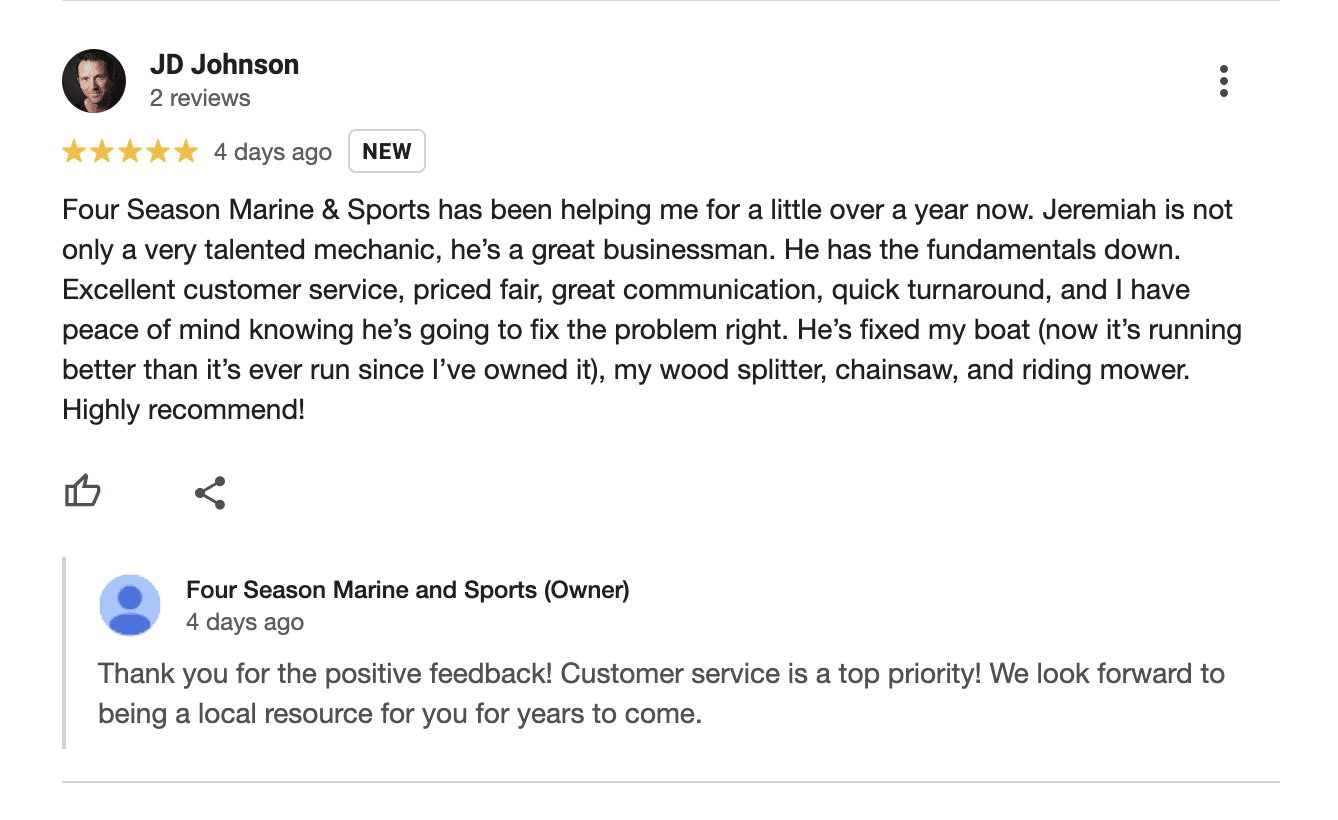
This week, I rewatched one of my favorite movies, This is Spinal Tap. So naturally, I’m going to attempt the segue of all segues that starts at the cult classic and ends at our topic of the day.
There’s a moment in Spinal Tap where guitarist Nigel Tufnel proudly shows off his amp and says, “These go to 11.” Because sometimes... 10 just isn’t enough for feedback. Turns out, we all love feedback, whether it’s cranking up an amp or hearing what people think about our business. And just like turning your amp to 11, online reviews are the kind of feedback that can seriously “amplify” your small business’s reputation and digital presence.
Let’s dive into why reviews matter and how you can take your feedback game all the way to 11.
Why Online Reviews Matter
1. They Build Trust Instantly
87% of consumers read online reviews before making a purchase decision.Reviews act like personal recommendations in the digital world. The more quality reviews you have, the more credible you look.
2. They Impact Local SEO
Google loves reviews. A healthy number of positive reviews can boost your visibility in local search results.Reviews also help with the "map pack" listings on Google. The map pack refers to the businesses that show up first when you put in a specific search query (i.e. best music venues in Minneapolis).
3. They Influence Buying Decisions
Positive reviews can turn a "maybe" into a "yes."Even a few strong reviews can outweigh flashy ads or discounts, because people trust real experiences.
4. They Show You’re Active and Engaged
A business with recent reviews looks alive and active.A business with no new reviews for two years? Not so much.
How to Get More Online Reviews (Without Feeling Weird About It)
1. Just Ask (But Make It Easy)
Most people are happy to leave a review if you make it simple.Send a quick follow-up email after a purchase or service, and include the direct link to your Google, Yelp, or Facebook review page.Here’s an example of a template you can use for review solicitation:"Thanks so much for choosing [Business Name]! If you have a minute, we’d love it if you could leave us a quick review here: [link]."
2. Timing Is Everything
Ask when the experience is fresh, right after a successful service, delivery, or customer support call. Haven’t asked past customers yet? It’s never too late, even clients from years ago might have a positive story to tell.Going along with timing, make sure to have a routine flow of getting reviews. 50 reviews in one day will look fishy. 50 reviews over 4 months will look authentic and natural.
3. Make It Part of Your Routine
Train your team to remind happy customers to leave reviews.Add review asks to your receipts, email signatures, and invoices.
4. Respond to Reviews: Good and Bad
Replying shows you care, and bad reviews are bound to happen. Do not turn negative reviews into a guitar smash onstage (callback). Accept the review, respond in a kind manner, and offer that you are happy to help further resolve any issues.A thoughtful response can turn a 3-star review into a 5-star loyal customer.

A review exchange from Four Season Marine and Sports, a client of Chase Digital Co.
Where Should You Focus on Getting Reviews?
Google Business Profile: #1 priority for local SEO.
Facebook: Especially for local businesses and services.
Yelp: Great for restaurants, service businesses, and retail.
Industry-specific sites: Think Zillow for real estate and TripAdvisor for hospitality.
Pro Tip: Don’t spread yourself too thin. Focus on 1-2 platforms where your customers already spend time.
Another Pro Tip: Once you have these reviews, use them in other ways. Website content, collateral, and more!
Bottom Line
Online reviews are one of the most powerful, low-cost ways to build trust and boost your visibility. The businesses that win in 2025 will be the ones that make it easy and natural for happy customers to leave reviews.
If you’re ready to crank your reputation management strategy up to 11, but don’t know where to start, let’s chat.

